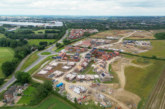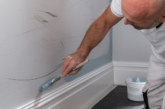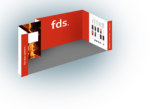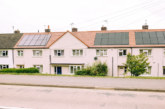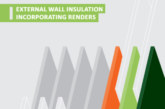
Paul Collins, Technical and Training Manager at Hager, outlines some key areas for discussion as current standards for wiring regulations progress through a consultation and review process.
The IET Wiring Regulations, otherwise known as BS 7671, are undergoing a full revision with a series of potentially substantive changes planned that could have a significant impact on electrical contractors and project specifiers. These changes, which will be the 18th edition of the Wiring Regulations, come into full effect on 1st January 2019.
The review is primarily designed to ensure harmonisation with current European standards. In addition, it provides an opportunity to clarify existing regulations, improve safety standards and allow new technology and methodology to be incorporated.
A period of public consultation is being followed up with a panel review of submitted comments. The final stages will see the 18th edition of the Wiring Regulations published in June 2018. Following a six-month transition phase, the regulations will come into full effect from the first day of 2019. It is important to remember that at the time of writing, the document remains at a draft stage. Any proposed changes are still subject to further revisions. However, there are some potential initial key areas in the spotlight when it comes to updating the regulations. They could impact the way electrical projects are specified in the future and are set out below.
Protection against electric shock
The protective measure of automatic disconnection of supply gives maximum disconnection times in Table 41.1. This table at present applies to final circuits up to and including 32A. It is proposed that this table will apply to final circuits up to 63A that contain one or more socket outlets and up to 32A if only fixed equipment is connected. This could clear up some points where, for example, a socket outlet forms part of a cooker control unit protected by a 40A MCB. Whilst the existing table declares this as a 5s disconnection time circuit, the proposed change would make this 0.4s.
Requirements of Regulation 411.3.3 for protection by means of an RCD up to 30mA include socket outlets up to 20A rating or for mobile equipment used outdoors up to 32A rating. There is also currently an exception allowed — by labelling socket outlets for a particular use or by carrying out a risk assessment, the requirement of using RCDs is alleviated where the installation is not a dwelling.
The proposed change in the draft will include socket outlets up to 32A and there are no exceptions allowed. This means that every socket outlet up to the rating of 32A will require RCD protection no matter what type of installation or equipment it is supplying. A potential new regulation, 411.3.4 will also require RCD protection up to 30mA on circuits supplying luminaires in domestic installations regardless of their wiring method.
Protection against thermal effects
Section 421, concerning protection against fire caused by electrical equipment, could have a new regulation. The proposed 421.1.7 introduces arc fault detection devices saying they may be used to provide additional protection against fire caused by arc faults.
Protection against overvoltages
 This entire section could be rewritten, with an exception for dwellings where the value of the installation does not justify the inclusion of overvoltage protection. The draft currently suggests that they shall be provided where the result of an overvoltage would affect different aspects; such as danger to life, public services, commercial or industrial activity, and more. This is likely to mean there will be more of a requirement to install surge protection devices.
This entire section could be rewritten, with an exception for dwellings where the value of the installation does not justify the inclusion of overvoltage protection. The draft currently suggests that they shall be provided where the result of an overvoltage would affect different aspects; such as danger to life, public services, commercial or industrial activity, and more. This is likely to mean there will be more of a requirement to install surge protection devices.
Aside from protection issues, examination of other potential revisions outlines changes in three important areas: 1) selection and erection of equipment, 2) protection, isolation, switching, control and monitoring, and 3) earthing arrangements.
Selection and erection of equipment
For a number of years, previous regulations have stated that switchgear, protective devices, accessories and other equipment shall not be connected to a conductor intended to operate at a temperature exceeding 70˚C.
In the draft, Note 4 has been added, stating specifically that where this is the case, tables 4D1A to 4D5 or tables 4H1 to 4H4 shall be used. Tables 4E1 to 4E4A and tables 4J1 to 4J4 shall not be used when using 90˚C thermosetting cables. In addition, 521.11 Wiring Systems in Escape Routes has been deleted and replaced with 521.10.202. In summary, the proposed draft of this new regulation is essentially the same. However, it now applies to all wiring systems whether or not they are in escape routes. Metal clips, saddles or ties could therefore be required when using non-metallic cable management systems.
Protection, isolation, switching, control and monitoring
Chapter 53 has been proposed to have a complete revision, and some of the key requirements within the new chapter include:
- Devices for protection against electric shock by automatic disconnection of supply shall also be suitable for isolation.
- Automatic reclosing devices providing protection against electric shock shall only be used where that associated part has access restricted to skilled or instructed persons only. A warning notice shall be clearly displayed where this associated part is protected by such a device.
- Different types of RCDs are described and the appropriate RCD must be selected.
- Where Class I enclosures are used with TT systems and RCDs are used to give protection against electric shock on outgoing circuits, double or reinforced insulation of all live conductors shall be used on the supply side of the RCD.
- Co-ordination of protective devices has been expanded and now covers other items of electrical equipment and not just protective devices.
- Chapter 53 now includes an informative annex, which gives guidance on the selection of devices to perform a particular function and guidance on how to consider selectivity.
Earthing arrangements and protective conductors
This chapter proposes an additional requirement for an earth electrode to be added to an installation in addition to any earthing facility provided by the distributor. Another recommendation is that foundation earthing should be used for new buildings.
Finally, there are also proposed new regulations added to provide for the switching of a protective conductor, should this be necessary when two sources of energy supply an installation.

